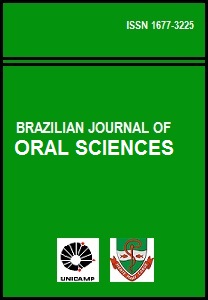Abstract
Aim: To evaluate the influence of two methods of additional activation on the surface hardness of composite resins. Methods: Two types of composites were tested: Filtek P60 and Filtek P350. For each material, 48 specimens were prepared and divided into four groups: Group 1 (control) - conventional activation, using a halogen light for 40 s; Group 2 - conventional activation and additional activation with a halogen lamp for 60 s; Group 3 - conventional activation and additional activation with an autoclave at 127°C for 6 min at 1.7 kg/cm3 pressure; and Group 4 - conventional activation and additional activation with an autoclave at 134 °C for 15 min at 2.1 kg /cm3 pressure. The use of autoclave has been suggested for being a standard equipment at dental offices, and thus, even at locations far from dental laboratories, it would be possible to have simple techniques that allow access to indirect restorations at lower costs. Data obtained in the study were analyzed statistically by analysis of variance followed by Tukey’s test at a 5% level of significance. Results: For Z350, there was a significant increase in hardness for all groups of additional activation (Groups 2, 3 and 4), compared with the control group. For P60, a significant increase in surface hardness was found compared with the control group for the groups that used additional activation with an autoclave (Groups 3 and 4). Conclusions: Additional activation with an autoclave increased the surface hardness of the tested resins to a greater degree than additional activation with a halogen light.The Brazilian Journal of Oral Sciences uses the Creative Commons license (CC), thus preserving the integrity of the articles in an open access environment.
Downloads
Download data is not yet available.

